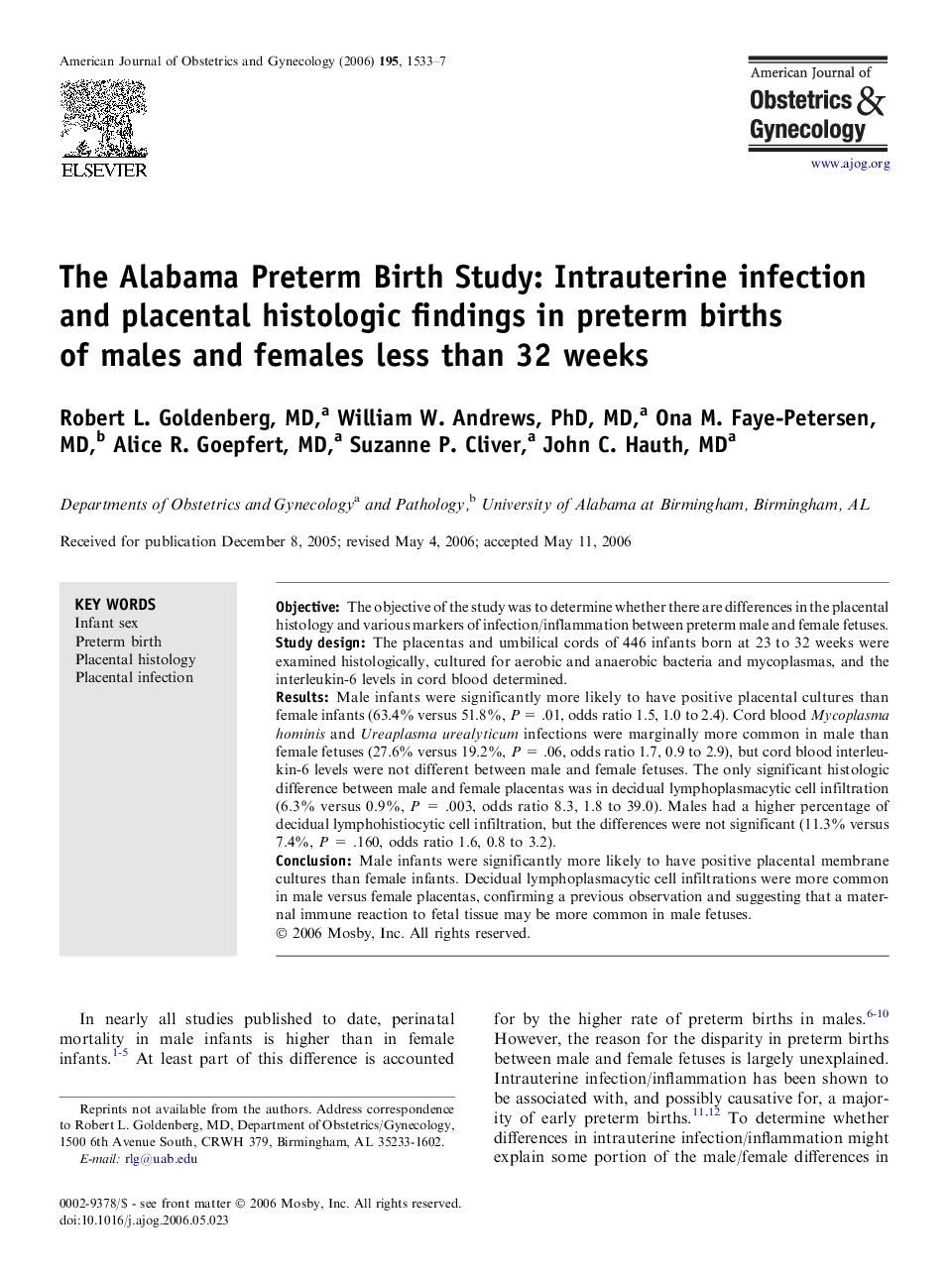| Article ID | Journal | Published Year | Pages | File Type |
|---|---|---|---|---|
| 3442423 | American Journal of Obstetrics and Gynecology | 2006 | 5 Pages |
ObjectiveThe objective of the study was to determine whether there are differences in the placental histology and various markers of infection/inflammation between preterm male and female fetuses.Study designThe placentas and umbilical cords of 446 infants born at 23 to 32 weeks were examined histologically, cultured for aerobic and anaerobic bacteria and mycoplasmas, and the interleukin-6 levels in cord blood determined.ResultsMale infants were significantly more likely to have positive placental cultures than female infants (63.4% versus 51.8%, P = .01, odds ratio 1.5, 1.0 to 2.4). Cord blood Mycoplasma hominis and Ureaplasma urealyticum infections were marginally more common in male than female fetuses (27.6% versus 19.2%, P = .06, odds ratio 1.7, 0.9 to 2.9), but cord blood interleukin-6 levels were not different between male and female fetuses. The only significant histologic difference between male and female placentas was in decidual lymphoplasmacytic cell infiltration (6.3% versus 0.9%, P = .003, odds ratio 8.3, 1.8 to 39.0). Males had a higher percentage of decidual lymphohistiocytic cell infiltration, but the differences were not significant (11.3% versus 7.4%, P = .160, odds ratio 1.6, 0.8 to 3.2).ConclusionMale infants were significantly more likely to have positive placental membrane cultures than female infants. Decidual lymphoplasmacytic cell infiltrations were more common in male versus female placentas, confirming a previous observation and suggesting that a maternal immune reaction to fetal tissue may be more common in male fetuses.
